10 Best Trees to Grow in Pots (With Pictures)
-
Pete Ortiz
- Last updated:
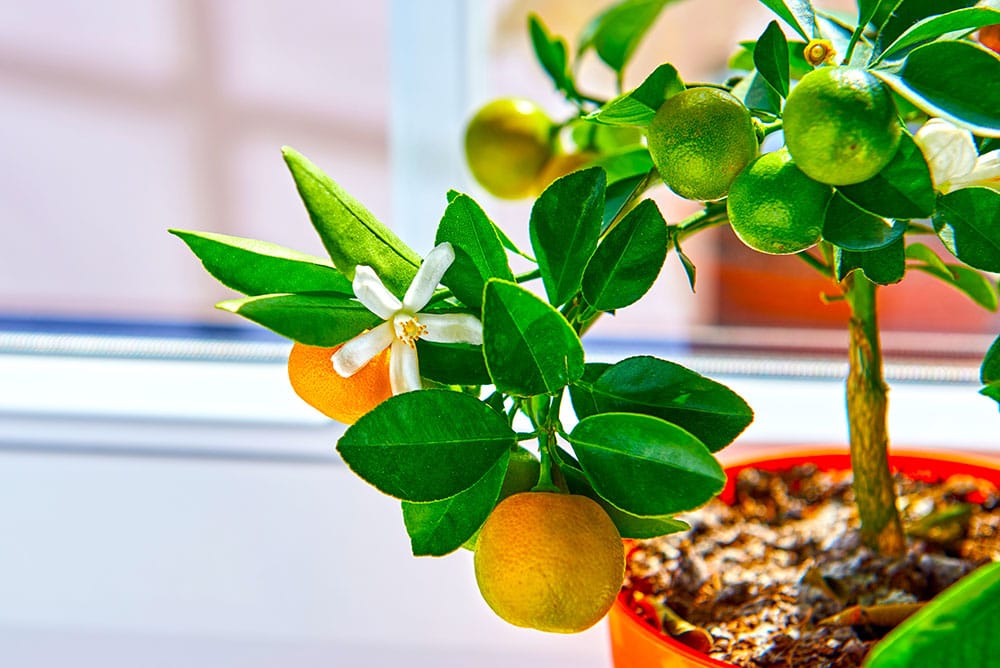
Potted trees can range from mundane, well-known species to exotic. Common or rare, they can enhance the beauty of a small backyard, a folly, or even add to the harvestables from a home garden. Here are some top picks for beauty, scent, and tastiness:
The 10 Best Trees to Grow in Pots
1. Japanese Maple Tree
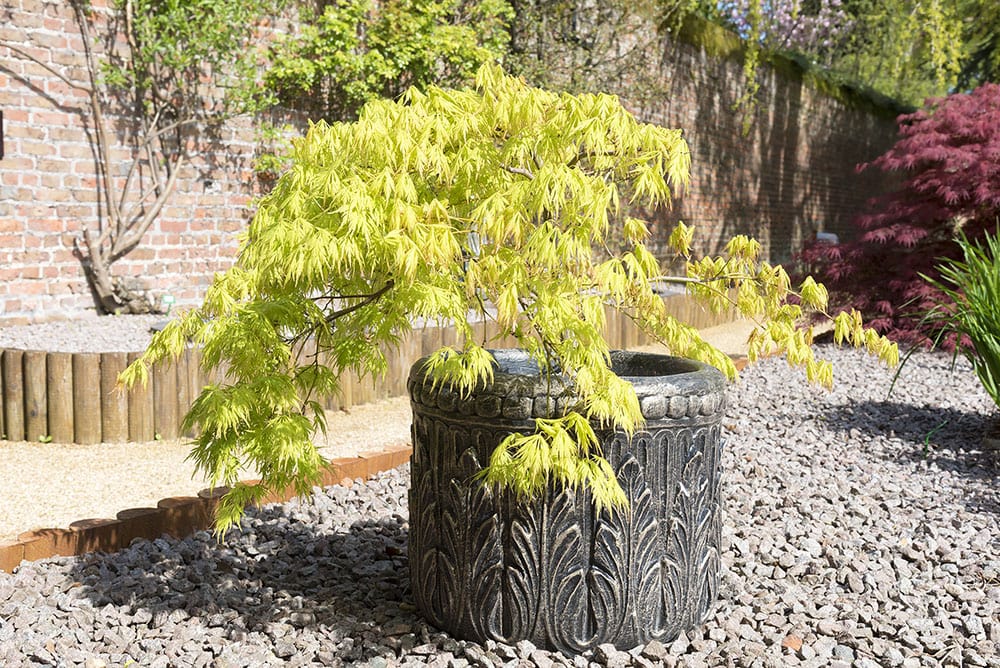
| USDA Hardiness Region | 4–9 depending on variety |
| Sun | Partial shade |
| Soil | Well–drained, acidic |
| Maximum Height | 5–25 feet depending on variety/growing conditions |
Japanese Maple trees have lovely, delicate leaves that turn red, orange, or purple each fall. Many cultivars are small enough to be potted, and the well-drained soil in a pot favors their need for well-drained soil. It is best to prune this tree as little as possible and as young as possible to avoid fungal infections, so choose a cultivar that fits the pot, space, and temperature zone needed.
- Beautiful fall colors
- Can be purchased for colder or hotter zones
- Can be damaged by direct, hot sunlight or frozen by very cold temperatures (Zone 4 or less)
2. Citrus (Lemon, Orange, Tangerine) Tree
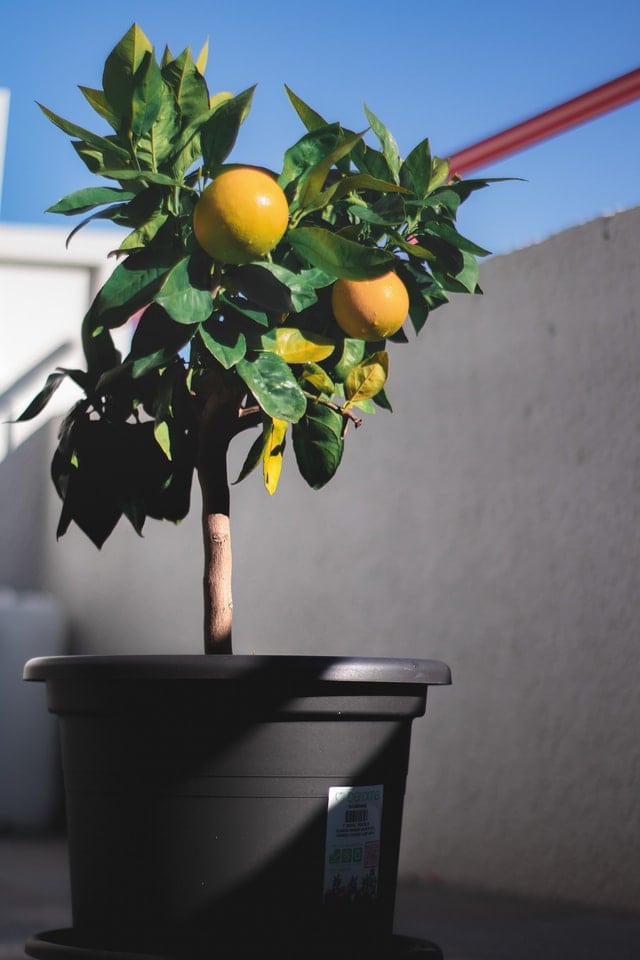
| USDA Hardiness Region | 4–5 if pot moved indoors during cold months, otherwise 9–11 |
| Sun | Full sun |
| Soil | Loam or sandy loam, well-drained |
| Maximum Height | Depends on cultivar |
Citrus trees are good-smelling, beautiful evergreens that offer tasty fruit to the owner. It can take 2–3 years for them to establish enough to start bearing fruit if grown from an adult tree, seven years if grown from seed. Make sure that a cultivar that can fit in the desired space is chosen and/or that the tree is appropriately pruned to fit the space. The pot should be perforated so it drains well, and the soil should be kept relatively dry compared to most plants. Keeping the pot raised off the ground will allow better airflow, critical to citrus root health.
- Wonderful smell
- Beautiful leaves
- Fruit!
- Must be moved indoors during cold months
- May have to wait several years for fruiting
3. Juniper
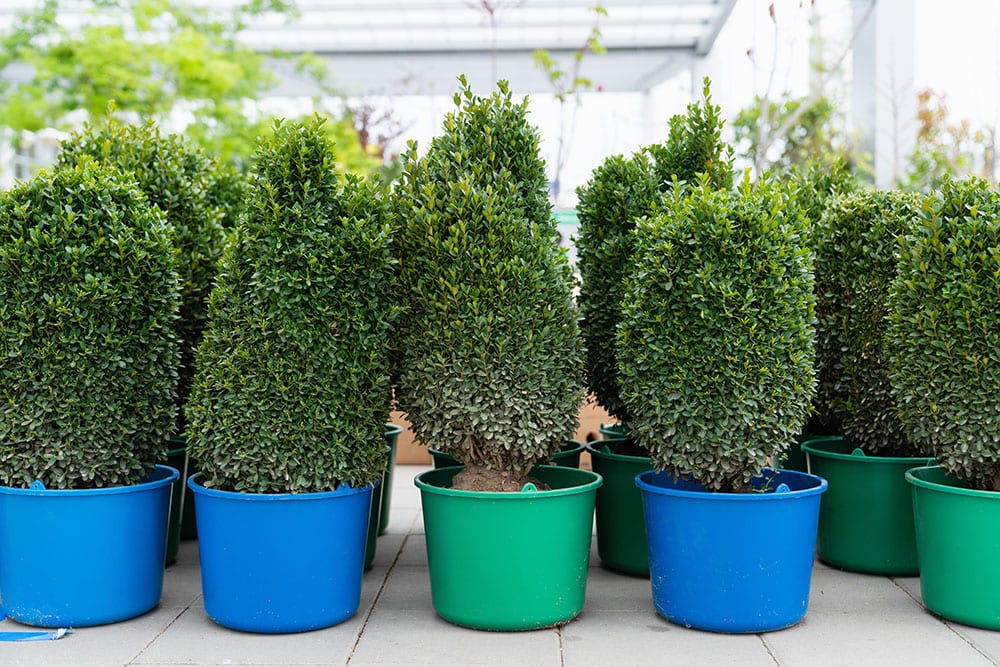
| USDA Hardiness Region | 2–7 |
| Sun | Full sun |
| Soil | Well-drained |
| Maximum Height | 2–50 feet depending on the variety |
Juniper plants grow well in most of North America, including colder climates. They have a distinct, fresh smell and can be shaped with shears or other pruning tools to accentuate landscapes or other features around a property. Smaller varieties can be grown in pots, although care should be taken to prune them appropriately while growth is young to avoid removing foliage to an unsightly extent. Junipers grow well even in highly urbanized environments as they tolerate pollution.
- Easy to grow, hardy
- Minimal maintenance does not need fertilizing or require pruning
- Smells good and berries are favored by wildlife
- Flowers are not particularly beautiful
- Difficult to start from seed, likely will need to get and transport a live tree
4. Dwarf Conifer
| USDA Hardiness Region | 4–8, some cultivars above or below |
| Sun | Shade to full sun depending on variety |
| Soil | Many depending on variety, usually prefer well-drained sandy loam |
| Maximum Height | Many depending on variety |
Conifers are fantastic additions to any garden, patio, or landscape. They can be had in varieties of all shapes and sizes, favoring most temperature ranges in America, and with evergreen foliage of many hues. For specifics on the wild variety available, check out the Hinoki cypress, Thuja occidentalis, or Weeping Blue Atlas Cedar varieties. They offer yellow, red, and blue-tinted foliage respectively, and highly contrasting leaf shapes.
- Available in dozens of varieties
- Hardy and easy to grow when matched correctly with sunlight needs/hardiness zone
- Good smelling
- None
5. Edible Fig
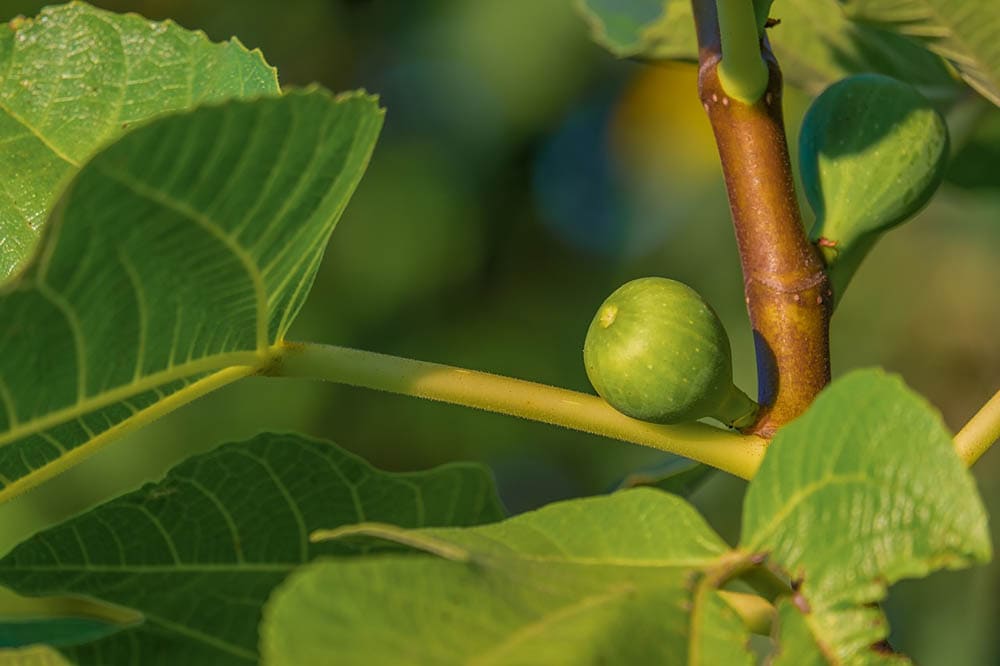
| USDA Hardiness Region | 8–10, must bring indoors if lower |
| Sun | Full sun |
| Soil | pH 6.0–6.5, loamy and well-draind |
| Maximum Height | Depends on variety, may outgrow pot eventually |
Only certain edible fig trees are bred for growing in pots: Blanche, Brown Turkey, Celeste, Verte, Ventura, and Chicago are a few to consider. Figs are relatively uncommon in American diets, but flavorful and excellent in many dishes. They are also quite healthy, containing several vitamins and minerals and a healthy cross-section of carbohydrates and fats.
- Fruit-bearing
- Can be pruned to shape – done correctly, this also encourages fruiting
- Tree may outgrow pot and need to be planted in the ground or moved to a larger enclosure
6. Crape Myrtle
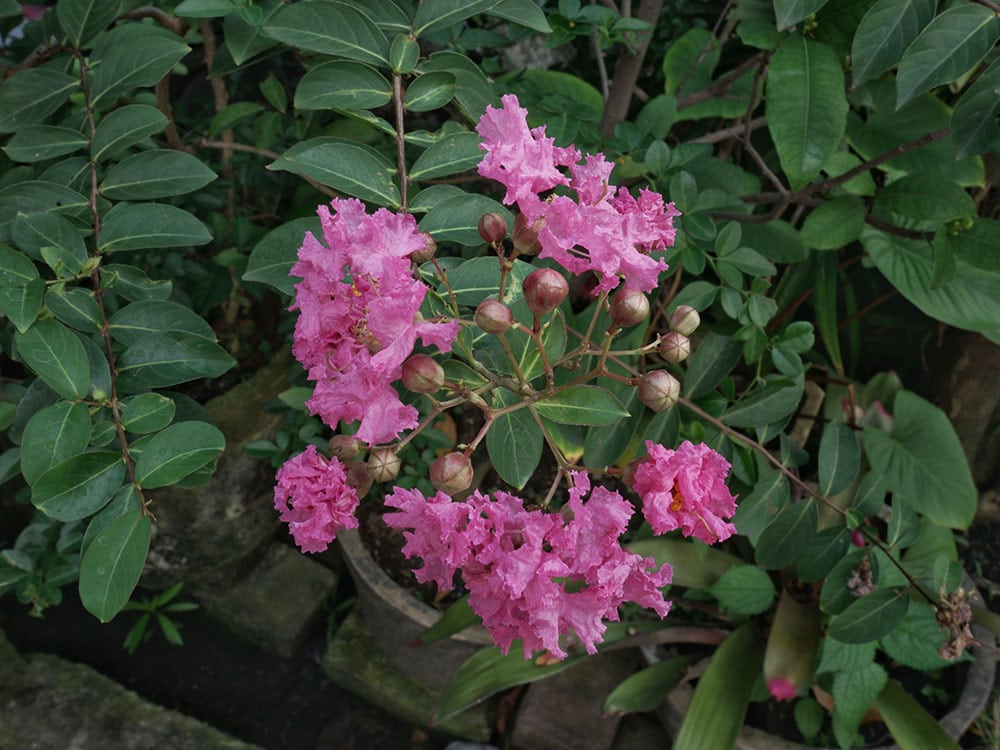
| USDA Hardiness Region | 6–9, some varieties tolerate colder |
| Sun | Full sun ideal |
| Soil | Moist, well-drained |
| Maximum Height | 2–3 feet for dwarf, pot-ready varieties |
Crepe myrtles are often associated with the American South – gorgeous, full blossoms and sunlight-loving. They only do well in zone 6 or above in the ground, but can be grown in other zones in pots if they are brought indoors during the cold part of the year. Container sizing needs to reflect the maximum height of the plant, so if “indoors” is in an average living space, it will be important to go with a dwarf cultivar that only reaches 2–3 feet.
- Beautiful flowers
- Hardy
- Proper cultivars ideal size for pots
- Will have to bring indoors in cooler zones
7. Olive

| USDA Hardiness Region | 8–11 depending on variety, very sensitive to freezing |
| Sun | 8–12 hours of direct sunlight/day |
| Soil | Loams (sandy, silt, clay, or silty clay) |
| Maximum Height | Max height determined by pruning (can reach up to 50 feet planted in the ground) |
Olive trees are suitable for decorative pruning and will require it to grow in containers without getting too large. They come in fruit bearing and purely ornamental varieties, and are drought-tolerant, so they do well with containers. Make sure to pick a large pot. Olive trees grow more slowly when potted, but even small olive trees will grow large eventually and need room for their roots to expand. It is also likely the tree will require repotting as it grows, and the root system starts to wrap around inside the pot.
- Elegant appearance that can be pruned/trained into shapes
- Can be fruit bearing
- Drought-resistant
- Has to be moved indoors when it’s cold outside
- Requires pruning/training and repotting
8. Rhododendron
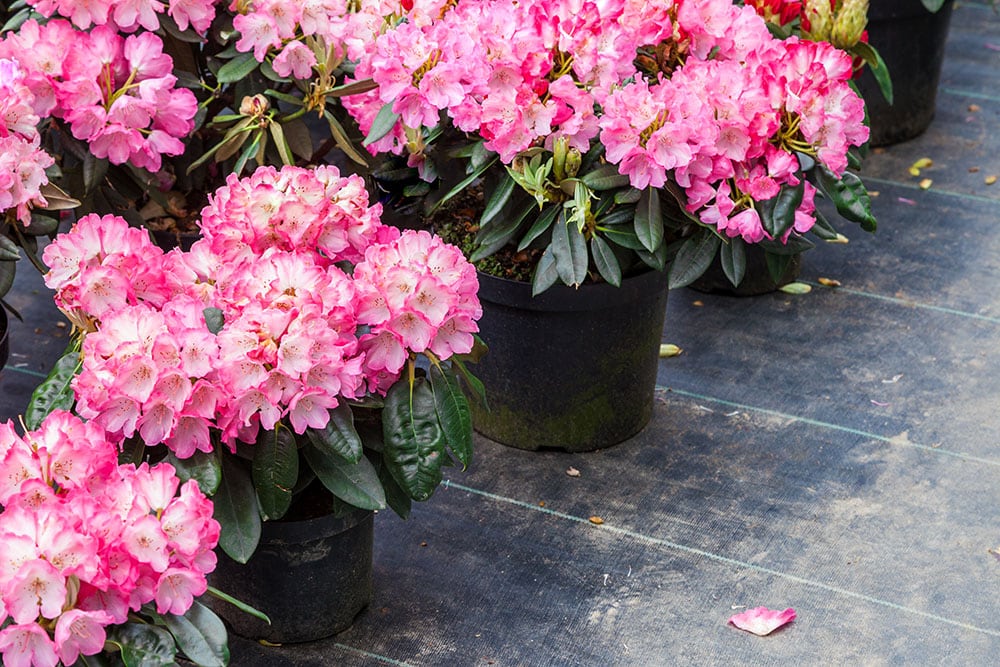
| USDA Hardiness Region | 4–8, may be wider or narrower depending on variety |
| Sun | Full sun to partial shade |
| Soil | Well-drained, acidic (pH 4.5–6.0) |
| Maximum Height | Can be up to 13 feet tall when not pruned back |
Rhododendrons are shrubs that are covered in gorgeous flowers during their blooming season. They are available in thousands of varieties for various growth conditions, colors, and flower size/shape. As with many potted trees, a pot should be larger than the one the tree comes in – somewhere around one-third bigger. Rhododendrons need a well-drained pot and fertilizer for the maximum benefits and need repotting every year to two years.
- Tremendous variety available
- Easy to care for
- Renowned for beautiful flowers
- Need repotting and fertilizer, slightly higher maintenance than some others on this list
- Related Read: 10 Easy Vegetables to Grow in Pots (With Pictures)
9. Sweet Bay

| USDA Hardiness Region | 8–10, possibly 7 in some areas |
| Sun | Full sun |
| Soil | Well-drained and high in compost |
| Maximum Height | Approximately 6 feet when container-grown |
Sweet bay is treasured for its pleasant smell and as an herb in cooking. The leaves are 2”–4” long and bright green. It grows as a small shrub or tree, and if container grown it will grow less and less quickly than if grown in the ground. Container plants should be brought indoors if temperatures will fall to or below freezing. Pruning improves leaf density, causing the plant to grow shorter and thicker like a shrub instead of tall like a tree. Repotting or root pruning is advised around every third year. If harvesting leaves for cooking, drying them first enhances and concentrates the flavor.
- Herb that can be used in home cooking
- Aromatic herb has an excellent smell
- Can prune branches and roots to shape plant for container growth
- Somewhat higher maintenance with pruning/moving indoors during freezing season
10. Flowering Dogwood
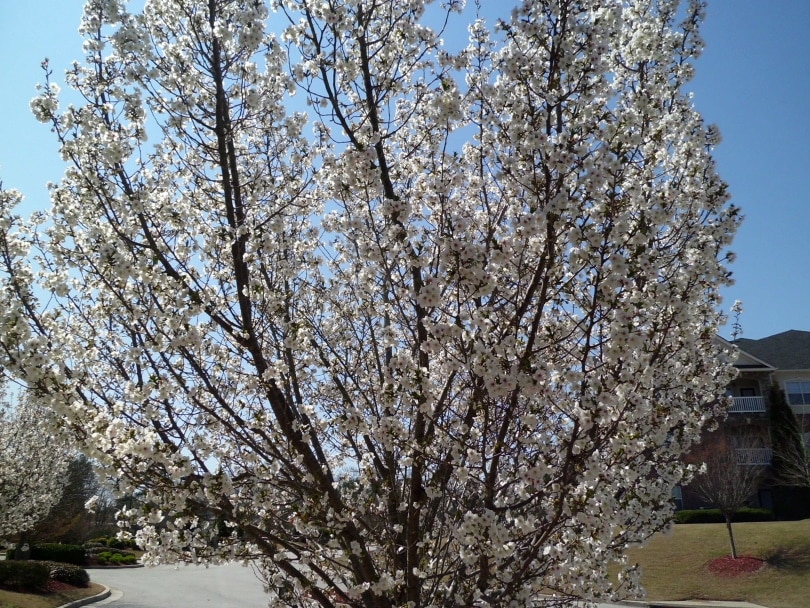
| USDA Hardiness Region | 5–8 ideal, may tolerate 9 |
| Sun | Partial shade to full sun in cooler zones, partial shade only in zone 9 |
| Soil | Loamy, clay, sandy, well-drained, moist |
| Maximum Height | 15–40 feet |
Flowering dogwood trees can be grown in pots, and they are gorgeous. That said, they are considered a challenging tree to grow in a pot and are recommended for serious gardeners looking for a challenge. Dogwoods have deeper, advanced root systems that make container growing tough. They need lots of water but the soil also has to be well-drained. Root pruning is a must to keep the plant container-sized.
- Lovely white or red (purple-hued) blossoms
- Challenging to grow in containers, lots of maintenance
What Do I Need to Know About Caring for Potted Trees?
Potted trees will dry out more quickly than those planted in the earth. It is important to water frequently, meet any fertilization needs for the chosen species, and ensure a species that can survive in a pot has a pot large enough for its root system. Pots should be purchased at least one-third larger than the pot the plant comes in the nursery. Study the type of plant and know whether it requires above or below ground pruning and how often, and how often it needs to be repotted to grow well.
Container grown plants also allow gardeners in cold climates to grow plants that normally only do well in warmer zones. These plants can either be grown in an arboretum or greenhouse year-round or brought outside when the weather will be warm enough, then brought back in when the weather gets cold again.
Conclusion
We looked at 10 varieties of trees that do well in containers with the proper care. Some are particularly beautiful, smell good, or offer fruits or herbal ingredients for recipes. All of them are good candidates to consider for a home, garden, porch, arboretum, or greenhouse. Remember to carefully consider the final size and care requirements before purchasing a tree!
- Japanese Maple Hardiness Zones Chart
- citrus.com
- How to Grow Common Juniper
- Monrovia
- American Conifer Society
- Fig Tree Container Planting: Tips For Growing Figs In Pots
- Tips for Growing Crepe Myrtles in Containers
- Container Grown Olive Trees – How To Grow An Olive Tree In A Pot
- How to Grow a Rhododendron in a Container – Horticulture
- How to Grow Sweet Bay
- Caring For Potted Dogwood Trees – Gardening Know How
Featured Image Credit: Trambitski, Shutterstock
Contents



